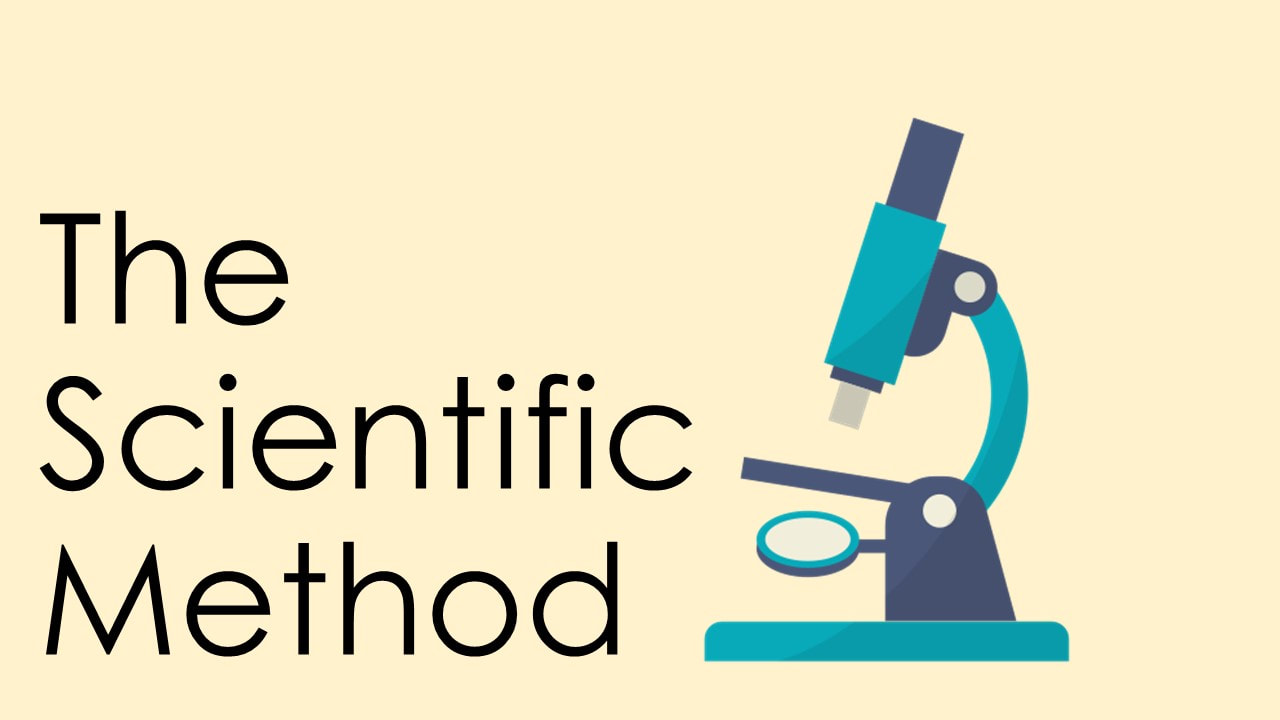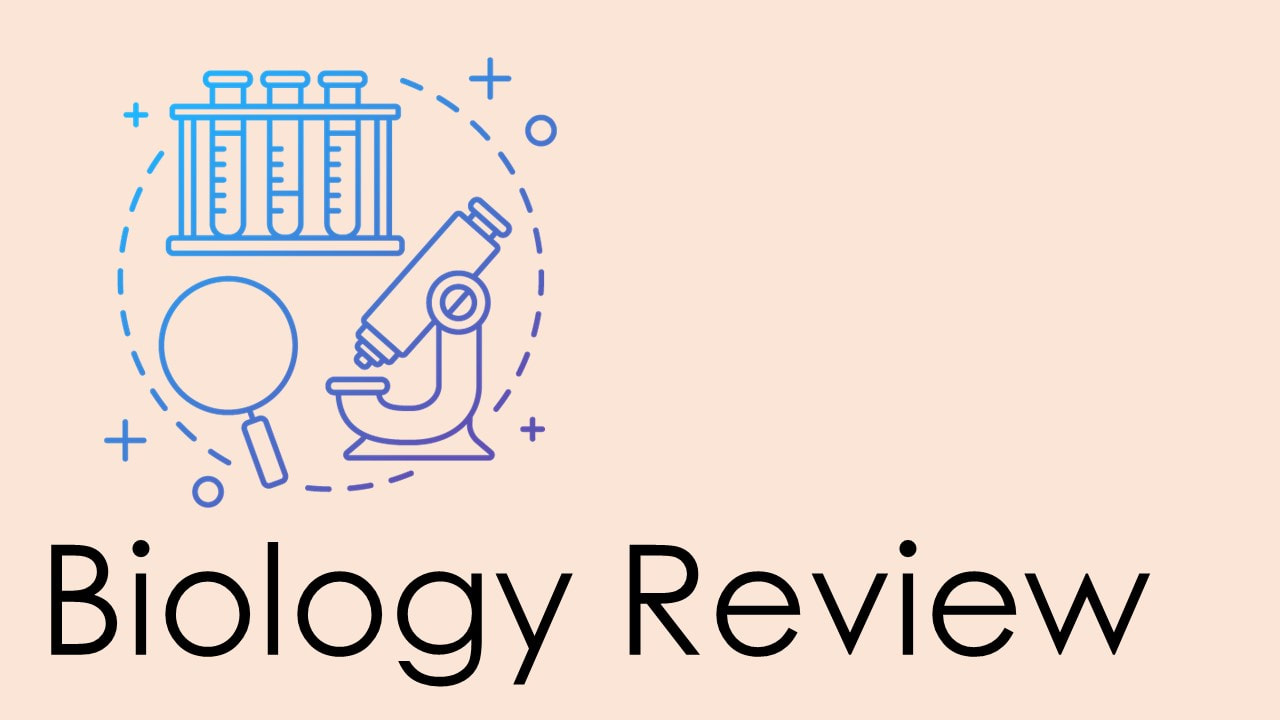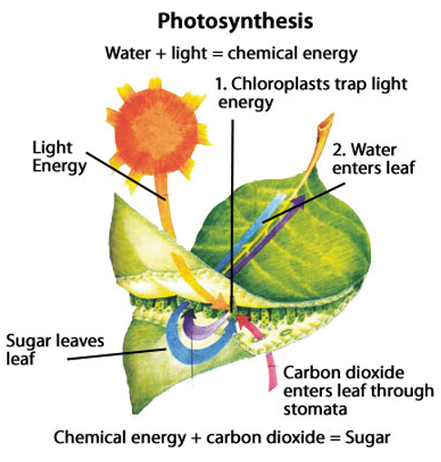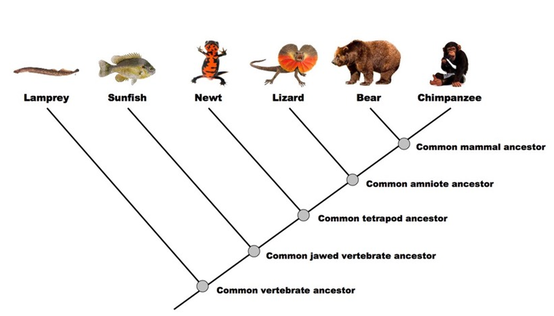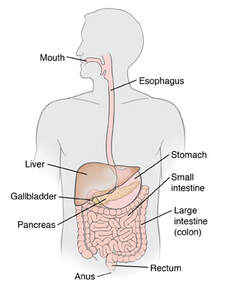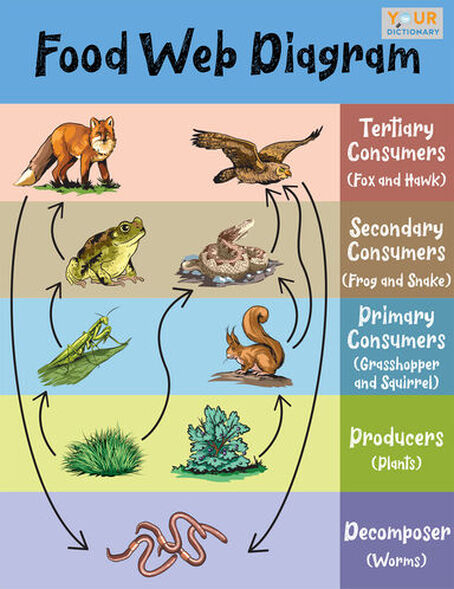Biology
Click on the subject you want to study
The Scientific Method
|
The scientific method is a process that is used to find answers to questions about the world around us. There are several versions of the scientific method. Some have more steps, while others have only a few.
All versions of the scientific method include a question to be answered, a hypothesis, and an organized method for conducting and analyzing an experiment. Watch the video for more information about the scientific method and look at the flow-chart to see the steps of the scientific method laid out: |
|
|
Download and read the following document for two examples of how the scientific method was used in history:
Below is an example of how the scientific method could be used in your own life. Match each action to the correct step of the scientific method:
| |||
Energy & Photosynthesis
|
|
A plant is an organism that can make its own food using a process called photosynthesis. Plants can use the energy from sunlight to turn water and carbon dioxide into sugar. (“Photo” means “light,” and “synthesis” means “make.”) They take water from the ground, carbon dioxide from the air, and energy from light and turn them into food.
Photosynthesis is a very complicated chemical process. To understand the basics of photosynthesis we need to start by looking at a plant cell.
|
A cell is the building block of a plant. A plant is made of individual cells in much the same way that a Lego structure is made of individual bricks. Most importantly for our discussion of photosynthesis, all plant cells have organelles called chloroplasts. It is inside the chloroplast that photosynthesis takes place. The chloroplast’s job is to use the energy in the sunlight to make sugar.
|
Without drawing each individual molecule, the formula for photosynthesis looks like this:
This says in pictures what we’ve already said in words: plants use sunlight, carbon dioxide and water to make sugar. In the process of making sugar, oxygen and water also are produced.
|
Label the diagram above with the correct words from the photosynthesis formula.
|
Cell Reproduction & Mitosis
|
|
Cells are the basic unit of life.
The three main parts of all cells are the nucleus, cytoplasm, and cell membrane. Plant cells and animal cells share many other organelles, or features of the cell, but plant cells contain unique organelles, like the cell wall, central vacuole and chloroplasts.
Download the reading for more information on the different organelles, and use that information to label the plant and animal cells in the activity below:
| ||
|
|
|
|
Cells regularly make duplicates of themselves in a process called mitosis, or cell division. The steps of mitosis are interphase, prophase, metaphase, anaphase, telophase, and cytokinesis.
Download and answer the questions about the different stages of mitosis, & some practice GED questions about cells:
| |||||
DNA
The instructions for building all living things are found in a molecule called DNA, which is made of a backbone and chemical base represented by A, C, G or T. DNA molecules have two strands that are joined together by complimentary base pairs. A pairs with T, and C pairs with G. These building blocks function together in larger units called genes. Each gene is a set of instructions for building a specific protein. A complete set of genes is called a genome, which is a set of instructions for building an entire organism.
|
The genome of every person has the same genes arranged in the same order, but small differences in the sequences of the bases in genes make each person unique.
|
Answer practice GED questions about DNA:
| ||
|
Build your own strand of DNA here!
|
Traits & Genes
A trait is a specific characteristic of an organism, such as hair color or blood type. Traits can be determined by genes or the environment, or more commonly by interactions between them. The genetic contribution to a trait is called the genotype. The outward expression of the genotype is called the phenotype.
|
Which traits are inherited, which are acquired through the environment, and which are influenced by both? Take the quiz below to test your knowledge:
Read about how inherited traits can be passed down from parent to offspring, and then answer some practice GED questions about traits:
|
| ||||||
Genetics & Punnett Squares
During sexual reproduction, an organism receives half of its chromosomes from one parent and half from the other. The traits, or alleles, that an organism receives can either be dominant (meaning that the trait can be seen in the offspring), or recessive (meaning that the trait is not seen, or inactive). Dominant traits, such as brown eyes, are expressed through capital letters (RR), and recessive traits, like blue eyes, are expressed through lowercase letters (rr).
|
So for example, a blue-eyed parent would carry the recessive (rr) alleles, and a brown-eyed parent would carry dominant (RR) alleles. Their potential offspring would receive one dominant allele (R) and one recessive allele (r), meaning their alleles would be (Rr). This means the offspring would have visible brown eyes, but would carry the recessive trait for blue eyes. This pairing of dominant and recessive alleles is called heterozygous or hybrid. The parents carry only dominant or recessive genes, and so their alleles are homozygous.
|
A Punnett square is a diagram that shows all of the possible genetic combinations that can occur during sexual reproduction. So in the example above, the homozygous dominant and homozygous recessive parents would always produce heterozygous alleles in their offspring.
|
Watch the video to learn more about how to fill out Punnett squares, and download the worksheets below for more practice:
|
| ||||||||||
Evolution & Cladograms
|
A cladogram is an evolutionary tree that diagrams the ancestral relationships among organisms.
The organisms in each clade, or group, are characterized by shared, similar features that they do not share with any other organisms in the cladogram. For example, a mammalian clade would include all mammals. The oldest common ancestors within a clade are located close to the trunk of the evolutionary tree, and newly evolved species form the tree branches farthest from the tree trunk. Watch the video below to learn more about cladograms, and then download the worksheets and complete the online cladogram activity for more practice:
|
| ||||||
Human Body I
|
Our bodies are made up of 11 basic organ systems that manage all the essential body functions. All the systems work together to try to create what is known as homeostasis or a state of balance within the body.
The 11 organ systems include the integumentary system, skeletal system, muscular system, lymphatic system, respiratory system, digestive system, nervous system, endocrine system, cardiovascular system, urinary system, and reproductive systems. Watch the video to learn more about these different body systems: |
|
|
The circulatory system, also known as the cardiovascular or vascular system, contains the heart and blood vessels, and moves blood throughout the body. This system helps tissues get enough oxygen and nutrients, and it helps them get rid of waste products.
Blood vessels include:
|
Some circulatory or cardiovascular diseases include:
|
Human Body IIThe nervous system controls everything you do, including breathing, walking, thinking, and feeling. This system is made up of your brain, spinal cord, and all the nerves of your body. The brain is the control center and the spinal cord is the major highway to and from the brain. The nerves carry the messages to and from the body, so the brain can interpret them and take action.
Learn more about the nervous and digestive systems by downloading the documents on the right. Label diagrams and answer questions based on what you read:
|
| ||||||||
Virtual Frog Dissection
Even though frogs are classified as amphibians, and humans are classified as mammals, both species have a lot in common when it comes to their anatomy and bodily functions. Download the reading to learn more about these similarities, and then look through the virtual frog dissection slide show to learn more about the anatomy of a frog.
| |||
Disease
A disease is an abnormal condition of an organism which interrupts the normal bodily functions that often leads to feeling of pain and weakness, and usually associated with symptoms and signs. This week, we're using the topic of disease to review things like the scientific method, reading graphs and charts, and mean, median, and mode!
|
Read about Dr. Ffirth and his experiments with Yellow Fever below, and answer questions about the scientific method:
|
| ||
|
Doctor Stubbins Ffirth observed that yellow fever was prominent during the summer, but receded as winter approached and made the mistaken conclusion that this meant the disease was not contagious. The fact that he never caught the disease after constant exposure to patients with the malady further inspired him. In order to prove the disease was non-contagious, Ffirth decided he needed to expose himself to all types of bodily fluids secreted by yellow fever victims. He drank the vomit of the victims, he injected it into his veins, he dripped it into his eyes and he inhaled the fumes from the vomit. Through it all, he never did manage to contract the disease. Rather than admitting that he made his point or moving on to testing on other people, Ffirth realized there were far more body fluids for him to experiment with. He used blood, urine, saliva and perspiration. Even after all of these tests, his still managed to resist the disease. Unfortunately, Ffirth failed to take into account the different stages of the disease. His samples all came from persons who were in the late stages of the malady, and were, thus, no longer contagious. Had he experimented with samples from people who only recently contracted the disease, his results likely would have been a whole lot different. As for the observation that the disease disappeared during the winter months? He was right about that, just wrong about the cause. Yellow fever is caused by a RNA virus that is spread by mosquitoes. That’s why it was so much more common during the humid summers on the East Coast. Fortunately, before word of Ffirth’s research spread, locals believed the disease was spreading through the waterways and Philadelphia introduced a closed water system that helped eliminate cisterns and barrels full of water that served as mosquito breeding grounds during the summer. |
Download and answer the practice GED questions about reading graphs:
Download and practice answering the mean, median, and mode questions:
| ||||
Ecosystems I
|
A biome is a large community of vegetation and wildlife that is adapted to a specific climate. There are five major types of biomes: aquatic, grassland, forest, desert, and tundra. Some of these biomes can be further divided into more specific categories, like freshwater, marine, savanna, tropical rainforest, temperate rainforest, and taiga.
|
| |||||
Within Earth's biomes are ecosystems. An ecosystem is a geographic area where plants, animals, and other organisms, as well as weather and landscapes, work together to form a bubble of life.
|
Two essential elements of any ecosystem are the carbon cycle and the water cycle.
Carbon is the basis for all life on Earth, and all organisms need carbon to survive. However, the Earth only has a fixed amount of carbon, so it needs to be continuously recycled through a process called the carbon cycle. Water is another key element to life on Earth. About 75 percent of our planet is covered by water or ice. The water cycle is the endless process that connects all of that water. It joins the Earth’s oceans, land, and atmosphere. | ||||||||
Ecosystems II
|
Read more about food webs here.
|
A food chain describes who eats who in nature. Every living thing, from one-celled algae to giant blue whales, needs food to survive. Each food chain is a possible pathway that energy and nutrients can follow through the ecosystem.
Each living thing in an ecosystem is part of multiple food chains, and all of these interconnected and overlapping food chains make up a food web. Download the following reading to learn more about the different roles living things can have in a food web, and then test your knowledge with the interactive quiz:
| ||||||
Biology Review
Take this GED practice test to review all you've learned this quarter:
| biology_review.pdf |
